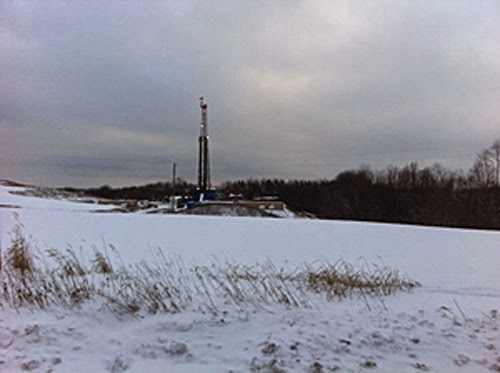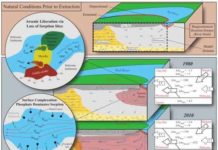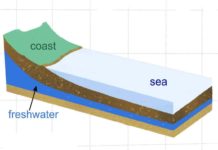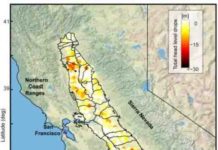
A University of Cincinnati research project is taking a groundbreaking approach to monitoring groundwater resources near fracking sites in Ohio. Claire Botner, a UC graduate student in geology, will outline the project at The Geological Society of America’s Annual Meeting & Exposition. The meeting takes place Oct. 19-22, in Vancouver.
Botner’s research is part of UC Groundwater Research of Ohio (GRO), a collaborative research project out of UC to examine the effects of fracking (hydraulic fracturing) on groundwater in the Utica Shale region of eastern Ohio. First launched in Carroll County in 2012, the GRO team of researchers is examining methane levels and origins of methane in private wells and springs before, during and after the onset of fracking. The team travels to the region to take water samples four times a year.
Amy Townsend-Small, the lead researcher for GRO and a UC assistant professor of geology, says the UC study is unique in comparison with studies on water wells in other shale-rich areas of the U.S. where fracking is taking place – such as the Marcellus Shale region of Pennsylvania. Townsend-Small says water samples finding natural gas-derived methane in wells near Pennsylvania fracking sites were taken only after fracking had occurred, so methane levels in those wells were not documented prior to or during fracking in Pennsylvania.
Hydraulic fracturing, or fracking, involves using millions of gallons of water mixed with sand and chemicals to break up organic-rich shale to release natural gas resources. Proponents say the practice promises a future in lower energy prices, an increase in domestic jobs and less dependence on foreign oil from unstable overseas governments. Opponents raise concerns about increasing methane gas levels (a powerful greenhouse gas) and other contamination involving the spillover of fracking wastewater in the groundwater of shale-rich regions.
“The only way people with private groundwater will know whether or not their water is affected by fracking is through regular monitoring,” says Townsend-Small.
The Ohio samples are being analyzed by UC researchers for concentrations of methane as well as other hydrocarbons and salt, which is pulled up in the fracking water mixture from the shales. The shales are ancient ocean sediments.
Botner’s study involves testing on 22 private wells in Carroll County between November 2012 and last May. The first fracking permits were issued in the region in 2011. So far, results indicate that any methane readings in groundwater wells came from organic matter. In less than a handful of cases, the natural methane levels were relatively high, above 10 milligrams per liter. However, most of the wells carried low levels of methane.
The UC sampling has now been expanded into Columbiana, Harrison, Stark and Belmont counties in Ohio. Researchers then review data on private drinking water wells with the homeowners. “We’re working on interacting with these communities and educating them about fracking as well as gathering scientific data, which is lacking on a very sensitive issue,” says Botner. “It can also be reassuring to receive data on their water supplies from an objective, university resource.”
The team also is seeking additional funding to begin monitoring groundwater wells near wastewater injection wells, where fracking brine is deposited after the wells are drilled.
Funding for Botner’s research to be presented at the GSA meeting is supported by a grant from the Missouri-based Deer Creek Foundation.
Note : The above story is based on materials provided by University of Cincinnati










